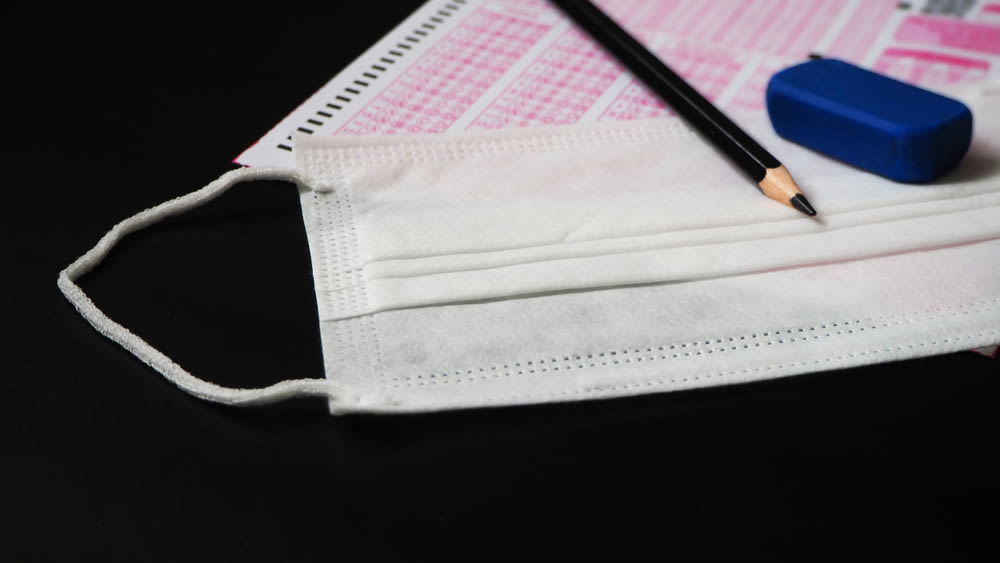Should Oregon Schools Stop Standardized Tests This Year?

Schools around Oregon are grappling with standardized testing in a pandemic school year.
Image: hanif66/Shutterstock
Next week, thousands of middle and high schoolers around the Portland metro area will return to school buildings for the first time since March of 2020, after Gov. Kate Brown ordered that every public school district in the state needed to provide some face-to-face time with teachers before the end of the school year.
To celebrate, there will be……standardized tests?
Even—or perhaps especially—in this most unusual of school years, federal education officials would like students nationwide to participate in traditional rounds of standardized testing. That will help, they’ve said, to pinpoint areas and demographics where learning loss is particularly acute, so that resources can be directed accordingly.
That’s one thing in a state like Florida, where schools have been open since September. But in Oregon, which is among the very last states in the nation to broadly reopen public schools, and where between roughly 20 and 40 percent of families are still choosing to keep their kids in distance learning, it’s another.
The state and school districts large and small are pushing back via a variety of strategies, saying that in-school instruction time is a precious enough commodity right now, with just two months until the end of the school year, that time shouldn’t be spent on testing.
“We felt very strongly that teachers have moved heaven and earth to get our kids back to school, and we are asking them to give up 12 hours of instruction time—after all that effort, we are plunking (kids) in front of a computer,” says Eva Skuratowicz, chair of the Ashland School Board.
Ashland is the first district in the state to move to an “opt-in” policy, where the state “Smarter Balanced” tests will be administered only to families who request it. Neighboring Eagle Point School District in Southern Oregon is following Ashland’s opt-in lead, while others are going even further: the Oregon Trail School District in Clackamas County says it just won’t administer the tests this year, and this week Portland Public Schools and Salem-Keizer Public Schools, two of the state's largest districts, said they would opt out too.
Skuratowicz says she’s heard concerns that the pause on standardized testing is intended to conceal the limits of distance learning, especially as local and national data shows that higher needs students have fallen further behind their peers during more than a year of virtual school, while other students get support from parents and tutors at home that might be artificially inflating their grades.
That’s not the motivation for her district, she says, noting that the “opt-in” status applies only for this school year. Rather, she says, “We want our kids in person with teachers, getting instruction. This is not about a coverup, this is about the fact that this data is not going to be useful for us.”
Chris Minnich, the CEO of the Portland-based Northwest Evaluation Association, which develops tests used in PK-12th grade and has been tracking student learning progress nationally throughout the pandemic, says standardized tests do have an important role to play in education.
“We do need information on how students are doing,” he says. “Tests can be a source of equity for students.” For example, if they show a student is struggling with fractions, schools and teachers can give extra support and attention to that subject area, especially pertinent given that the federal and state governments are pouring hundreds of millions of dollars into summer school programming intended to catch kids who aren’t progressing as quickly as they might have in a traditional school year.
And yet, Minnich says, because of timing in Oregon—returning to buildings so late in the school year—the concerns about an immediate pivot to testing are understandable.
“The first thing I wouldn’t do walking a kid back into a class is sitting them in front of a computer and giving them a test,” he says. “Anything that takes away from the time teachers have with students is seen as a challenge and that is very fair. Assessments need to be seen as key to what teachers are doing, an essential part of seeing what kids have picked up and what they need more help with. That’s a different conversation.”
Districts note that pausing the state-backed Smarter Balanced tests doesn’t mean that they have no data from standardized testing in place at all this year; for example, in Portland, younger students took the Measurement of Academic Progress or MAPS tests earlier this year, though that stops after middle school. Nor is it intended as a permanent change: in Ashland, at least, the opt-in policy will sunset after this school year.
Even the Oregon Department of Education has been pushing for scaled back testing, ultimately receiving a waiver from the federal government. Under the waiver, public school kids in grades 4, 7, 8, and 11 will take standardized math tests, while grades 3, 6, 7, and 11 will sit for language arts tests and only grades 5 and 8 will get science tests.
Under the federal 2015 Every Student Succeeds Act, public schools are required to give annual standardized tests in math and English, but all states were granted waivers in 2020 due to the pandemic.
However, districts that choose to fully opt-out of this year or move to an opt-in model are in violation of state rules, says Marc Siegel, a spokesperson for the Oregon Department of Education. They will have to submit a "corrective action plan" to show that they will be in compliance during the 2021-2022 school year, or state school funds could be affected, he adds.




